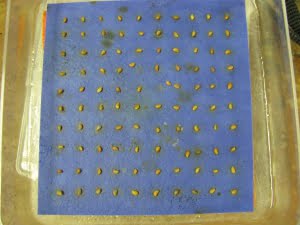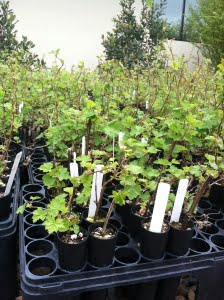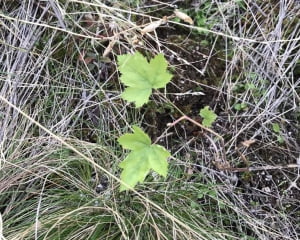
Helping Rare Species from Start to Finish
The Conservation Research Program at IAE conducts research on propagation methods and how to best ensure survival upon outplanting for a variety of rare species. Often for these projects, we focus on one question or the other separately, but occasionally we have the opportunity to work with a single species throughout the process.
Since 2014, we have worked to develop methods to propagate, grow, outplant, and examine survival of Rubus bartonianus (RUBA). Known by the common name, Bartonberry, this relative of blackberries, raspberries, and salmon berries is endemic to Hells Canyon. After working with Vale BLM to obtain seeds, we subjected the seeds to sulfuric acid, bleach, and mechanical sanding, as well as varying amounts of time in cold stratification, to determine the most effective treatment to increase germination. All of the treatments increased germination, compared to untreated seeds, with the sulfuric acid and bleach treatments increasing germination by up to 20%.


Germinating seeds from our experiment were then transplanted for growout. From February 2015 until November 2016, we cared for the young plants at the OSU greenhouse. We learned the proper fertilization rates (including the nuances of treating iron deficiencies in young plants) to promote optimum growth.
From November 14-17, 2016, we outplanted 2173 individual Bartonberry seedlings into 3 locations in Hells Canyon. The sites were located near the Baker and Wallowa County boundary, with the Reservoir and Copper Creek sites adjacent to the Snake River and the Hess Road site located in the Ashby Creek drainage southwest of the other sites. We planted 1124 seedlings at the Reservoir site, 866 seedlings at the Hess Road site, and 183 seedlings at the Copper Creek site.



To complete the cycle, we monitored survival of outplanted Bartonberry seedlings at the 3 locations in May 2017. We were very encouraged with what we found, especially considering the harsh conditions that give Hells Canyon its name. You can read more about Bartonberry on our previous blog post.
Here are the highlights of our survival monitoring:
• Proportion of plants remaining during surveys in 2017 ranged from 20-89%.
• Copper Creek had the highest proportion of plants remaining in 2017. Of the 183 plants originally planted in fall 2016, 131 were still actively growing the following spring.
• The Reservoir site had 492 plants recorded in 2017, from the 1124 planted in fall 2016.
• The Hess Road site had 353 plants counted out of the original 866 planted in fall 2016.
Restoration
Research
Education
Get Involved
Contact
Main Office:
4950 SW Hout Street
Corvallis, OR 97333-9598
541-753-3099
info@appliedeco.org
Southwest Office:
1202 Parkway Dr. Suite B
Santa Fe, NM 87507
(505) 490-4910
swprogram@appliedeco.org
© 2025 Institute for Applied Ecology | Privacy Policy
